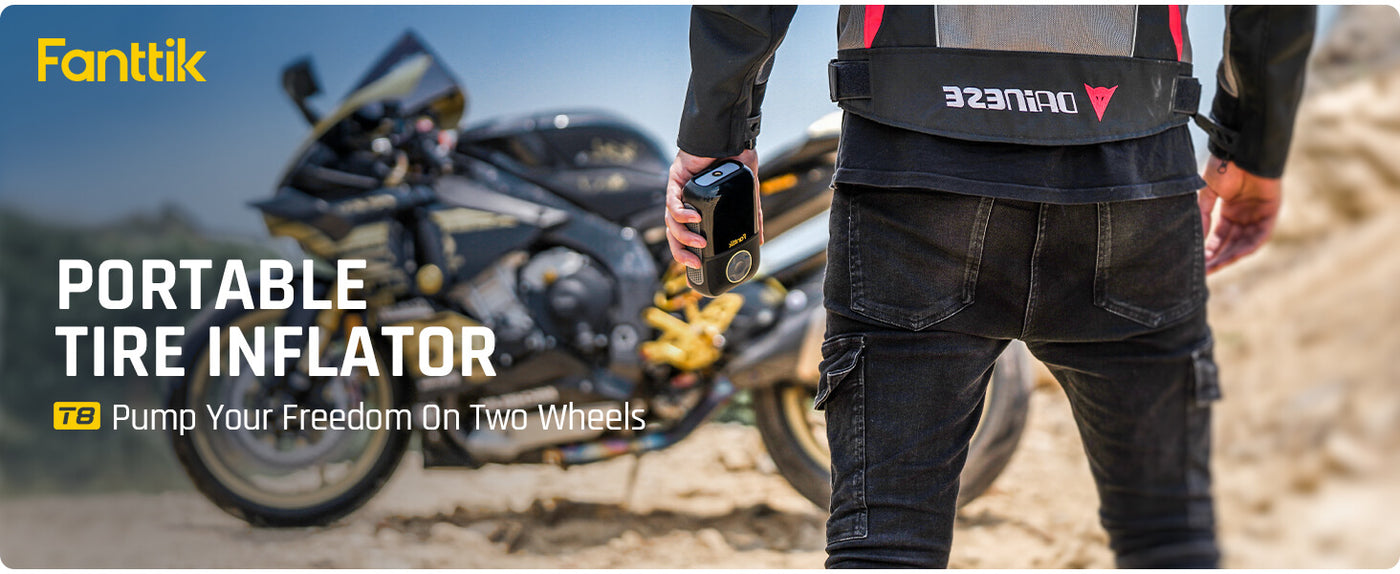Unlock the Secret to Effortless Tire Inflation for Your Car and SUV!
Maintaining proper tire pressure is crucial not only for your safety but also for the overall performance of your vehicle. Under-inflated tires can lead to decreased fuel efficiency and increased tire wear, while over-inflated tires can cause poor handling and a higher risk of blowouts. For car and SUV owners, having a compact pump on hand is a game-changer, allowing you to quickly and conveniently address tire pressure issues at home or on the go. In this article, we will guide you through the essential aspects of selecting the right compact pump so that you can keep your tires in top shape, ensuring a smooth and safe ride every time you hit the road.

Understanding Tire Pressure and Its Importance
Tire pressure plays a significant role in vehicle safety, fuel efficiency, and tire longevity. Properly inflated tires provide better traction, handling, and braking performance. When your tires are under-inflated, the surface area making contact with the road increases, leading to excessive heat buildup and faster wear. In contrast, over-inflated tires can result in a harsher ride and reduced contact with the road, making your vehicle more prone to skidding. Regularly checking and maintaining the correct tire pressure can help you avoid costly repairs and enhance your driving experience. A personal anecdote from a friend who faced a punctured tire during a long road trip highlights this importance; they were stranded for hours because they hadn’t checked their tire pressure before hitting the road. A compact pump could have made all the difference.
Features to Look for in Compact Pumps
When shopping for a compact pump, certain features can make all the difference in usability and efficiency. Portability is key; you want a pump that is lightweight and easy to store in your trunk without taking up too much space. Consider the power source options: manual pumps may require more effort, while battery-operated and plug-in models can save you time and energy. Inflation speed is another crucial factor; a pump that inflates tires quickly can be a lifesaver in emergencies. Lastly, ensure that the pump has an accurate pressure gauge, allowing you to monitor and adjust the tire pressure to the recommended level easily. These features not only enhance convenience but also ensure that you can effectively manage your tire health.
Types of Compact Pumps Available
There are several types of compact pumps available to suit different needs. Electric pumps are popular for their ease of use and quick inflation, making them ideal for those who want a hassle-free experience. Manual pumps, while requiring more effort, can be great for those who prefer a workout or need a backup option. Hybrid pumps combine the benefits of both electric and manual models, allowing you to choose the power source based on your situation. Each type comes with its pros and cons; for instance, electric pumps are faster but may require a power source, while manual pumps are portable but demand more physical effort. Evaluating your common use cases will help you decide which type is right for you.
How to Use a Compact Pump Effectively
Using a compact pump effectively is essential for achieving the best results. Start by ensuring that the pump is compatible with your tire's valve type. Next, attach the hose securely to the valve stem, making sure it’s airtight. Turn on the pump and monitor the pressure gauge, stopping when you reach the recommended PSI for your tires. It’s often helpful to keep a small notebook in your glove compartment to log your tire pressures regularly. This way, you can track any changes over time. Additionally, try to perform this task when your tires are cold, as driving heats them up and can give a false reading. My friend once inflated her tires right after a long drive, only to find they were over-inflated after they cooled down!
Maintaining Your Compact Pump
To extend the lifespan of your compact pump and ensure reliable performance, regular maintenance is key. Start by cleaning the pump after each use to prevent dirt and debris from clogging the mechanisms. Check the power source, whether it's batteries or a plug, to ensure they are functioning correctly. Periodically inspect hoses for cracks or leaks, which can impede performance. Storing your pump in a dry and cool place will also help maintain its integrity. These small steps can significantly extend the life of your pump and keep it ready for action whenever you need it.
The Importance of Compact Pumps for Tire Maintenance
In conclusion, having a compact pump for tire inflation is a valuable investment for any car or SUV owner. Understanding the importance of maintaining proper tire pressure can enhance your vehicle's safety, fuel efficiency, and longevity. By considering the key features, types, and maintenance tips outlined in this article, you will be better equipped to select the right compact pump that meets your needs. Remember, regular tire maintenance is not just about convenience; it’s about ensuring your safety on the road. So, take the plunge and invest in a compact pump today!







